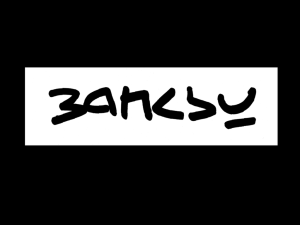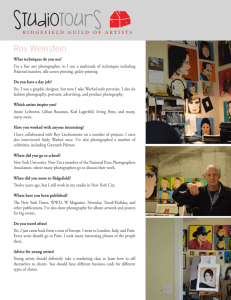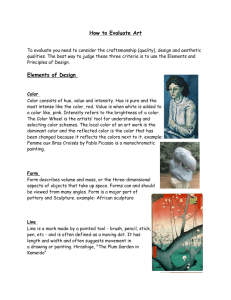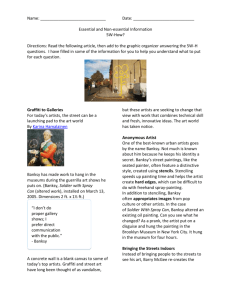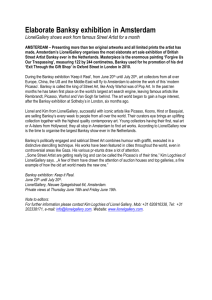concrete jungle
advertisement
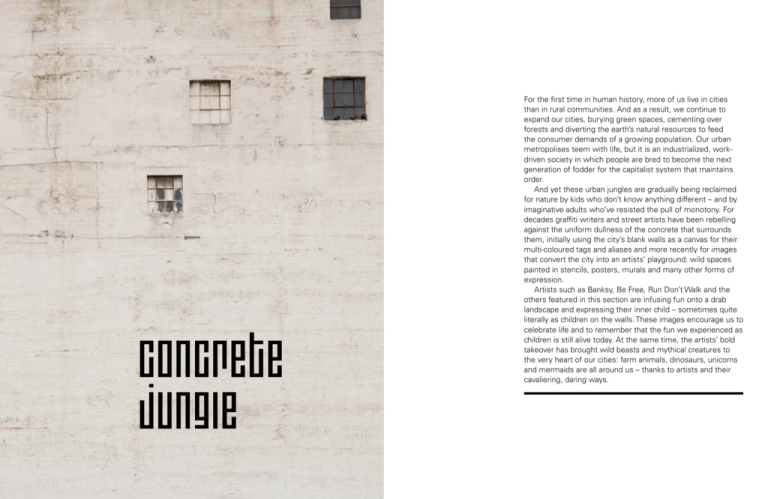
concrete jungle For the first time in human history, more of us live in cities than in rural communities. And as a result, we continue to expand our cities, burying green spaces, cementing over forests and diverting the earth’s natural resources to feed the consumer demands of a growing population. Our urban metropolises teem with life, but it is an industrialized, workdriven society in which people are bred to become the next generation of fodder for the capitalist system that maintains order. And yet these urban jungles are gradually being reclaimed for nature by kids who don’t know anything different – and by imaginative adults who’ve resisted the pull of monotony. For decades graffiti writers and street artists have been rebelling against the uniform dullness of the concrete that surrounds them, initially using the city’s blank walls as a canvas for their multi-coloured tags and aliases and more recently for images that convert the city into an artists’ playground: wild spaces painted in stencils, posters, murals and many other forms of expression. Artists such as Banksy, Be Free, Run Don’t Walk and the others featured in this section are infusing fun onto a drab landscape and expressing their inner child – sometimes quite literally as children on the walls. These images encourage us to celebrate life and to remember that the fun we experienced as children is still alive today. At the same time, the artists’ bold takeover has brought wild beasts and mythical creatures to the very heart of our cities: farm animals, dinosaurs, unicorns and mermaids are all around us – thanks to artists and their cavaliering, daring ways. Left and top right: Banksy; bottom right: Camo, Pagewood, New South Wales, Australia (2012) Above left: Icy and Sot, Tabriz, Iran (2011); above right and below: Be Free, Melbourne, Australia (2011); right: Be Free, abandoned house, Melbourne, Australia (2012) Those of you who draw fake moustaches on faces in newspapers clearly understand the notion of subverting the celebrity image and poking fun at society’s fascination with celebrity status. Street artists are masters of this humour, taking the fun to a level where no one is safe: not royalty, not politicians, not the deceased – not even Jesus Christ. You may by now be familiar with Banksy’s take on Queen Elizabeth II, but around the world there is an impressive amount of celebrity-image manipulation and political or pop-culture satire, as well as simple tributes by fans. Not even Banksy himself is safe from both ridicule and homage on the streets of our cities. Some artists, notably Cryptik, have adopted images of famous people in order to bring that person’s story and message back to life. Images of Gandhi, Zapata, Martin Luther King Jr. and others help spread their legend and remind us that their teachings are as relevant now as ever before. famous faces Left: Queen Elizabeth by Banksy; above: John Travolta and Samuel L. Jackson by Banksy; below left: David Duchovny by unknown artist, Boston, Massachusetts, USA (2012); below right: John Lennon by Icy and Sot, Tehran, Iran (2010) Left: Kim Jong-un as Dr Evil by Solus, Dublin, Ireland (2013); right: Rihanna by Zabou and Pegasus, London, England (2012) ‘I like to create pieces that people can interpret freely, which would make them think, smile or any kind of reaction. I’m interested in attracting people’s attention on a wall or a place they would never notice otherwise. Street art makes the daily and urban environment a bit more fun and interesting, and I’m definitely fighting for that cause.’ Zabou Below: Madonna by unknown artist, Athens, Greece (2013). Photo by Julia Tulke; below right: Jack Nicholson by Alec Monopoly, Los Angeles, California, USA (2011) war & peace Although the peace movement is traditionally associated with the 1960s and 70s, our twenty-first-century governments continue to wage war and citizens in conflict zones continue to struggle to stay alive. Thanks to advances in news reporting and worldwide communication, the antiwar sentiment championed by earlier generations is more widespread now than ever – and street artists, like artists going back centuries, are among the most outspoken. Most modern artists are fortunate enough not to be persecuted or even killed for their political beliefs; Robbie Conal has notably called warmongers out by name. Meanwhile artists such as Banksy and Code FC turn the message on its head, creating arresting images of children interacting with warheads, soldiers rebelling against authority, or victims rising up against government oppression. By using images of civilians and soldiers in the streets, war is transformed from an abstract far-off event to one with which all of us can relate as individuals. We are painted into the picture. Other artists, among them Horge, use images of dictators and world leaders – Mubarak, Obama, Putin – to bring attention to the injustices that governments around the world either instigate or tolerate. Yet others depict people in gas masks as if preparing for war and destruction. The artists shown here are bold activists for a better world. Some, in countries such as Egypt, Iraq, Iran and Syria, are risking their lives to express their point of view. Left: Banksy; right: Camo, Alexandria, New South Wales, Australia (2012) ‘For sure he [Banksy] is an influence; originally even before I was doing stencils, like most people, it was the subject matter of the works that got me in. Now it’s more the technique.’ Camo Above: Icy and Sot, Tehran, Iran (2010); below left: Solus, Dublin, Ireland (2013); below right: Icy and Sot, Iran (2011); right: Soon, Berlin, Germany (2013)
